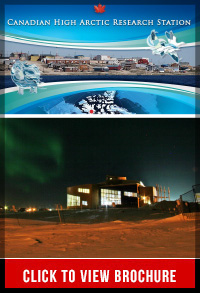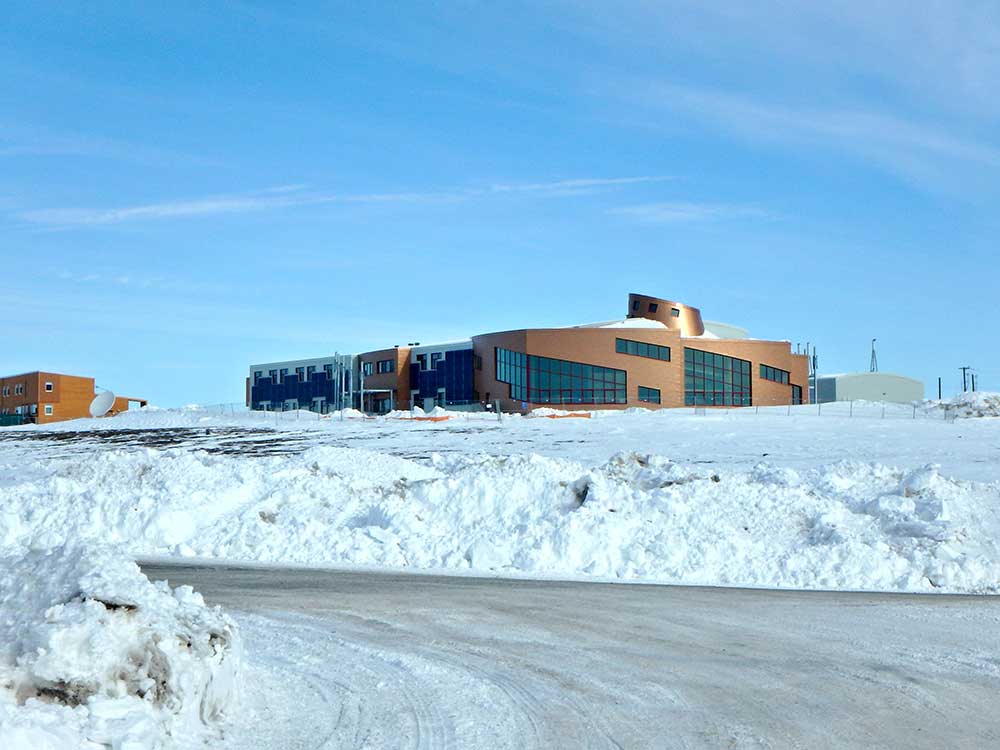Three Cheers for CHARS
By Anna Guy
CHARS ushers in a new era of Artic research.
 The Canadian High Arctic Research Centre—otherwise known as the CHARS campus, was an ambitious project from the onset. In 2010 when Indigenous and Northern Affairs Canada (INAC) announced Cambridge Bay as the location for a research station nothing short of world-class that would be on the leading edge of Arctic issues such as climate change, and anchor Canada’s research endeavors in the North for the advancement of economic opportunities, environmental stewardship and the quality of life of Northerners and all Canadians.
The Canadian High Arctic Research Centre—otherwise known as the CHARS campus, was an ambitious project from the onset. In 2010 when Indigenous and Northern Affairs Canada (INAC) announced Cambridge Bay as the location for a research station nothing short of world-class that would be on the leading edge of Arctic issues such as climate change, and anchor Canada’s research endeavors in the North for the advancement of economic opportunities, environmental stewardship and the quality of life of Northerners and all Canadians.
CHARS is an INAC-led project built in Cambridge Bay, Nunavut, a community of just under 2,000 people which provides the busiest stop for passenger and research vessels alike, thanks to its access to the Northwest Passage.
Already largely operational, the CHARS campus, made up of a Main Research building, a Field and Maintenance building and two triplex accommodation buildings, will provide a year-round presence and complement the network of research facilities across Canada’s North. Research labs, centres for technology development and knowledge sharing, facilities for training, teaching and community engagement—the CHARS campus is over 80,000 square feet (one of the largest in the region) of innovation, mixed with public spaces.
Matthew Hough is Chief Engineer for this infrastructure project. Hough was a natural choice for the project, with a background of nearly 20 years of civil engineering in the North—his first job out of university was in Nunavut, and since then he has consulted in the Northwest Territories, and managed the National Assessment of First Nations Water and Wastewater Systems at INAC. Hough has lost count of the amount of times he has travelled to Cambridge Bay since the project began, and was heading there the week after this conversation.
“When we were planning the station we often spoke of its potential to be a hub for research,” Hough says. “Smaller mobile locations are sometimes used, so the idea here is to have a space where field logistics can be coordinated, equipment can be available—like an emersion tank to prepare underwater vehicles before placing in Northwest Passage, or labs complete with the necessary tools, equipment and space for scientists and researchers to complete their work on site. Space—like the Knowledge Sharing Centre, the multi-use space and other meeting and interview room—will foster discussion and exchanges.”
Cambridge Bay was the ideal location for the project, sitting just off of the Northwest Passage, accessible by plane, and at a latitude that scientists recognize as a bellwether for climate change; flora and fauna studies in and around that area measure the changes in animal and marine life, for instance.
The CHARS campus’ location within Cambridge Bay is illustrative of the collaboration between the residents of Cambridge Bay and the project team. “Our initial favourite physical site for the CHARS campus, unbeknownst to us, was once a waterway that was filled in by the American military at the time of the Distance Early Warning Line sites.” says Hough. “The Elders advised us of this fact, and made the suggestion that we should build at a different site with more stable land. Had we not engaged the community on the location of the site, and then listened to their advice, it could have had a significant impact on our bottom line.”
Inuit Benefit Plans have been used as the key mechanism to deliver on Nunavut Land Claims Agreement obligations for procurement related to the CHARS campus, including the construction of the buildings, purchase of equipment, and leased housing. To date, approximately 219,813 hours of Inuit employment worth over $7.4 million dollars have contributed to the Inuit Benefits Plan for the construction of the CHARS campus. Skills development activities worth $400,000 dollars have been undertaken and $51.5 million dollars’ worth of construction contracts have been awarded to firms registered under Nunavut Tunngavik Incorporated.
One of the guiding principles and values of Inuit culture, as explained to the CHARS team by the Elders, is Qanuqtuurungnarniq, the concept of being resourceful to solve problems, and sometimes translated as meaning “to be resourceful and seek solutions through creativity, adaptability, and flexibility”. That was certainly essential to the architects who needed to plan an efficient and sustainable world-class research station. Ultimately, the CHARS campus is built to state-of-the-art standards and uses the best practices from centuries’ old traditional knowledge.
The deftly-named POLAR, which stands for Polar Knowledge Canada, is responsible for advancing Canada’s knowledge of the Arctic, strengthening Canadian leadership in polar science and technology, and promoting the development and distribution of knowledge of other circumpolar regions, including Antarctica. POLAR will operate the Canadian High Arctic Research Station (CHARS) campus. This new federal organization was created by the Canadian High Arctic Research Act and combines the resources and knowledge of the former Canadian Polar Commission and the former Science and Technology program at INAC into one organization.






